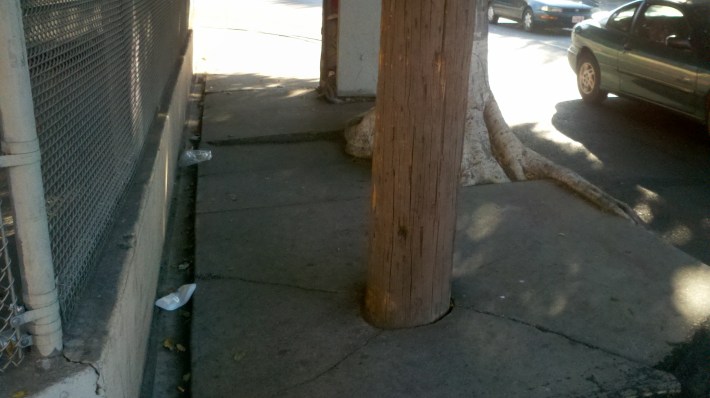Following a legal settlement in the summer of 2014, Angelenos have been waiting on the city to finally announce its plan to bring the city's sidewalks into compliance with the Americans with Disabilities Act. Over three quarters of a year later, the city has released its draft plan, and the City Council is planning a series of public meetings to bring this plan to the public. The plan is available on the City Clerk's website and here at Scribd.

The first of these meetings is a traditional City Council Committee hearing, albeit with two committees in attendance. However, the chairs of the Budget and Finance Committee (Paul Krekorian) and Gangs and Public Works Committee (Joe Buscaino) are already planning a series of public workshops on the plan to be held throughout the city.
“This is a critically important issue for all Angelenos," said Krekorian in a press statement. “We have an opportunity and obligation to move beyond piecemeal legislation and create a complete program to fix our broken sidewalks. This new report won't be the final program, but it's a good way to begin what will be a long, very public discussion. We want to hear from all residents and stakeholders so that we can come up with the best and fairest policy possible.”
As part of its legal settlement last year, the City pledged to spend $1.4 billion over the next three decades to retrofit the city's sidewalks to be in compliance with the Americans with Disabilities Act. Estimates vary over how many miles of city sidewalks need reconstruction, but there is little doubt that the decrepit and crumbling sidewalk infrastructure, along with a noticeable lack of curb cuts in many parts of the city, are the largest barriers to creating walkable communities.
The plan itself is proving somewhat controversial for what some see as a double standard between how businesses and homeowners are treated.***
Recognizing that the city cannot fix every sidewalk in the city with just the money budgeted and that maintaining the sidewalks after repair is an unfunded mandate, the city recommends turning sidewalk maintenance over to the owner of the adjacent property. In the case of privately-owned housing, the city would be responsible for returning the sidewalk to a state of good repair before turning the sidewalks over. The city is already referring to this program as "fix and release," a play off the popular fishing style of "catch and release."
Of course, if one has a ficus tree on your sidewalk skirt, a homeowner could still be stuck with a major long-term expense, even with a newly-repaired stretch of concrete.
The city is not planning on extending the same "fix and release" strategy to sidewalks adjacent to commercial properties. Instead, it intends to require that commercial property owners fix the sidewalks within the next couple of years and then maintain the sidewalks going forward.
So far, no city leader is commenting on the plan, although Krekorian, Buscaino, and Mayor Eric Garcetti all seem relieved to have a starting point for discussion. Monday will give us the first chance to see the public's comments on whether or not the city has a plan to fix the sidewalks that can work for everyone.
(***For the record, I am a homeowner. However, the sidewalks in front of my house are smooth and flat, repaired by the city a year or so before we purchased the house. Thus, the debate over who should pay now doesn't impact me on a personal level at all.)






